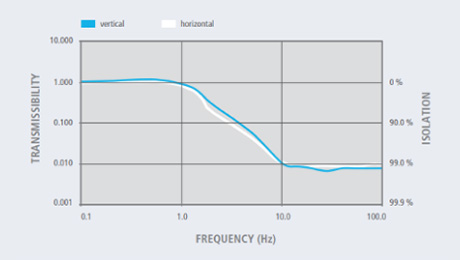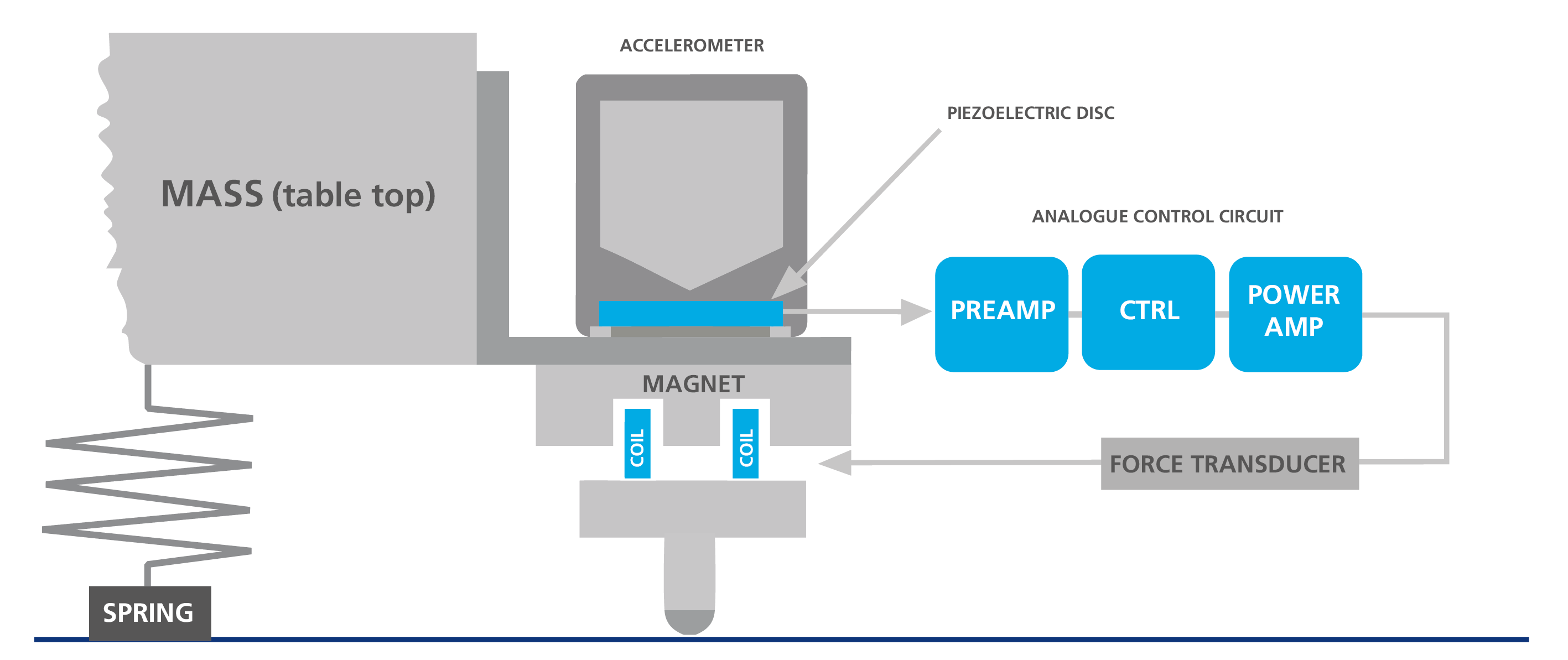Principles of Active Vibration Isolation Technology by Accurion
The impact of environmental disturbances, notably vibrations and acoustic noise, on research and production processes underscores the need for effective vibration control in ensuring the reliability of high-resolution measurements with sensitive instrumentation. This becomes particularly crucial when ambient vibration amplitudes align with the dimensions of the structures under investigation. Despite structural variations, passive vibration isolation systems, composed of springs and dampers, function as mechanical low-pass filters to mitigate resonance frequencies and amplitude within specific ranges. However, addressing their limitations, such as low resonance frequencies and amplification in pneumatic systems, Active Vibration Control (AVC) emerges as a solution. In AVC, signals from sensitive detectors are scrutinized by electronic circuitry, guiding electro-dynamic actuators to promptly generate a counter-force, eliminating resonance and amplification at any frequency. This distinguishing feature positions active vibration isolation systems as advantageous alternatives to their passive counterparts.



